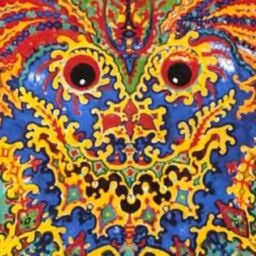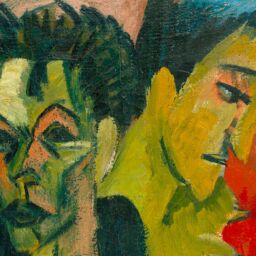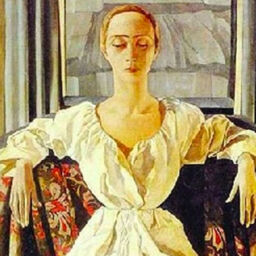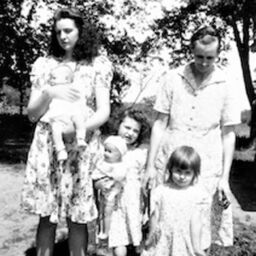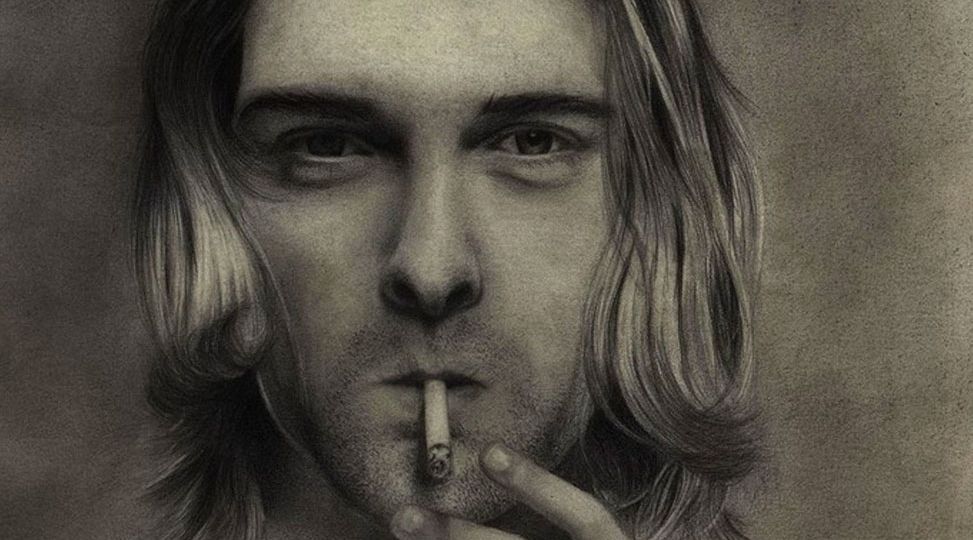
The “Forever 27” Tragedy
Dis-covering Dionysus in the Self-Annihilation of Kurt Cobain
Zachary Kampf, July 3, 2019
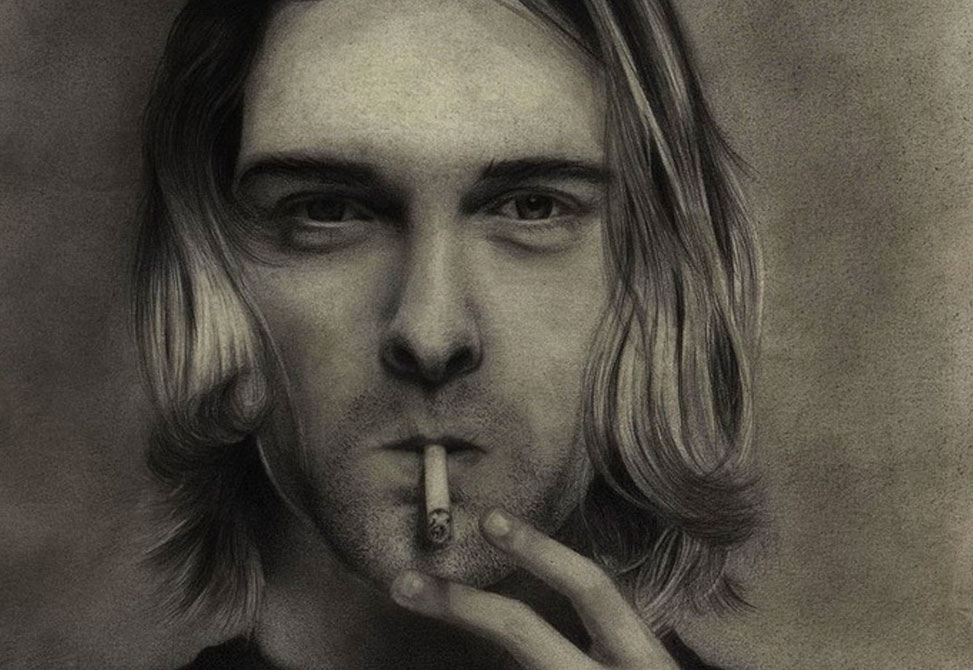
Little has been written on the psychological significance of this macabre fascination, with the exception of several efforts to debunk widespread superstition of a numerological curse, or false perceptions of an increased risk of death amongst musicians aged 27 (Hann, 2015; Kenny, 2015; Stein, 2011; Wolkewitz, Allignol, Graves, & Barnett, 2011). However, from a Jungian perspective the 27 Club phenomenon need not be concretized in such a way as to be concerned with any causal mechanisms that might underlie the untimely demise of renowned artists. Rather, the fascination can be viewed as expressive of an underlying archetypal resonance, as if the Forever 27 narrative is a modern day pastiche of ancient Greek tragedy, the hamartia of each character distilled into a general allegory of what not to do—an allegory that touches a deeply embedded pattern within each of us. While there are many ways to approach this phenomenon psychologically, the application of a typological lens—specifically the archetypal model proposed by John Beebe (2006)—yields particularly interesting insights, and the story of Cobain provides a rich illustration.
It should be noted that while the discussion below is drawn from existing biographical material that is extensive and well researched, the analysis remains speculative. It cannot be assumed that the public image presented in the biographical material reflects the true self. Only Cobain himself could be the final authority on his typological assessment. Therefore, the intention of this analysis is not to suggest a formal diagnosis or clinical vignette but to propose some of the functions and archetypes that may have been in operation as Cobain spiraled into his tragic finale.
“In the Sun I Feel as One”
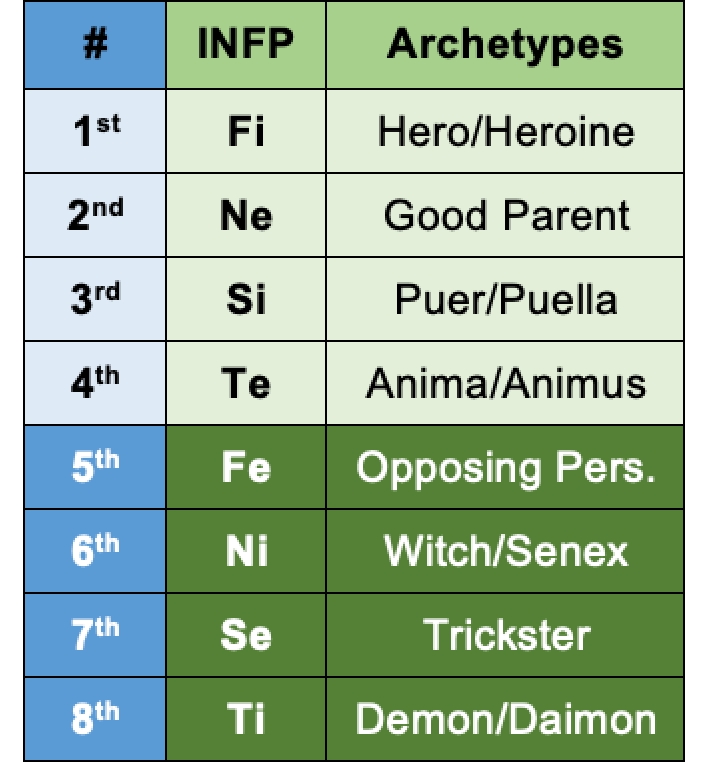
Though he was often labeled as shy or withdrawn, Cobain possessed an ability to connect with others on a deep, unspoken, emotional level. As a child, he exhibited the introverted feeling characteristics of “a peaceful, grounded aura” and a “fine-tuned sensitivity to the inner life of others” (Haas & Hunziker, p. 104). According to biographer Charles Cross (2014), care and concern for his little sister was of top priority for him, and his unusually high degree of conscientiousness regarding her wellbeing was an early display of a lifelong pattern of sensitivity to the needs and pains of others. Later in life he was able to translate this sensitivity to the stage, an attribute immediately perceived by former manager Danny Goldberg (2019) upon first witnessing Nirvana in live performance: “Kurt connected very deeply with the audience. … He was able to convey his inner spirit in a way that created instant intimacy. To this day, I cannot describe exactly what he did, only how it felt” (p. 21). Slim Moon, a friend from Nirvana’s early days, similarly attested to Cobain’s uncanny tendency of being “really quiet and then suddenly [capturing] the room” (as cited in Goldberg, 2019, p. 41).

Cobain was a prolific doodler, which also suggests an INFP type. His journals, released to the public in 2002, were inundated with stream of consciousness jottings—typical of extraverted intuition—depicting various dimensions of his inner life. The journals yield a palpable sense of internal conflict and provide insight into the more pathological expressions of his typology, eventually culminating in his tragic induction to the 27 Club. Much of the tension pivots on thwarted attempts to reconcile his formidable ambition for commercial success with his sense of obligation to punk culture—a subpopulation that disdains adherence to the mainstream and values authentic self-expression above all. Such value conflicts are deeply troubling for an INFP, the preferred function (Fi) being primarily concerned with creating and preserving internal harmony (Haas & Hunziker, 2006). It is also the case that the internal discord is rarely apparent on the surface for INFPs. Introverted feeling types seek first and foremost to align their lives with subjectively held core principles—the way in which the dilemma plays out or comes to resolution in the external world is generally of little consequence (Haas & Hunziker, 2006).
The apparent disregard for external resolutions of internal impasses is evident in the many letters contained in Cobain’s journals. He became estranged from his family when his parents divorced, and the schism set a precedent for a number of quarrelsome relationships that would riddle his life thereafter.He frequently wrote letters to friends, family, and significant others, ostensibly with the intention of mending the damage he had caused in the relationships. But according to Cross (2014), the vast majority of these letters were written yet never sent. Contrary to extraverted feeling (Fe)—which would desire the fruition of harmonious relation between self and other in the outer world—Cobain’s letters ignore the recipient, instead using the epistolary relationship primarily as a mirror through which to explore and differentiate his own befuddled inner tensions. It was as if, by completing each letter, Cobain could prove to himself that he had remained true to his own principles, at which point it became redundant for him to send the letters. According to Jung (1921/2014a), for those preferring Fi, “Objects serve at most as a stimulus” for inner images, and so with his inner demands satisfied, Cobain could simply move on with little consideration for the intended recipient (¶ 638).
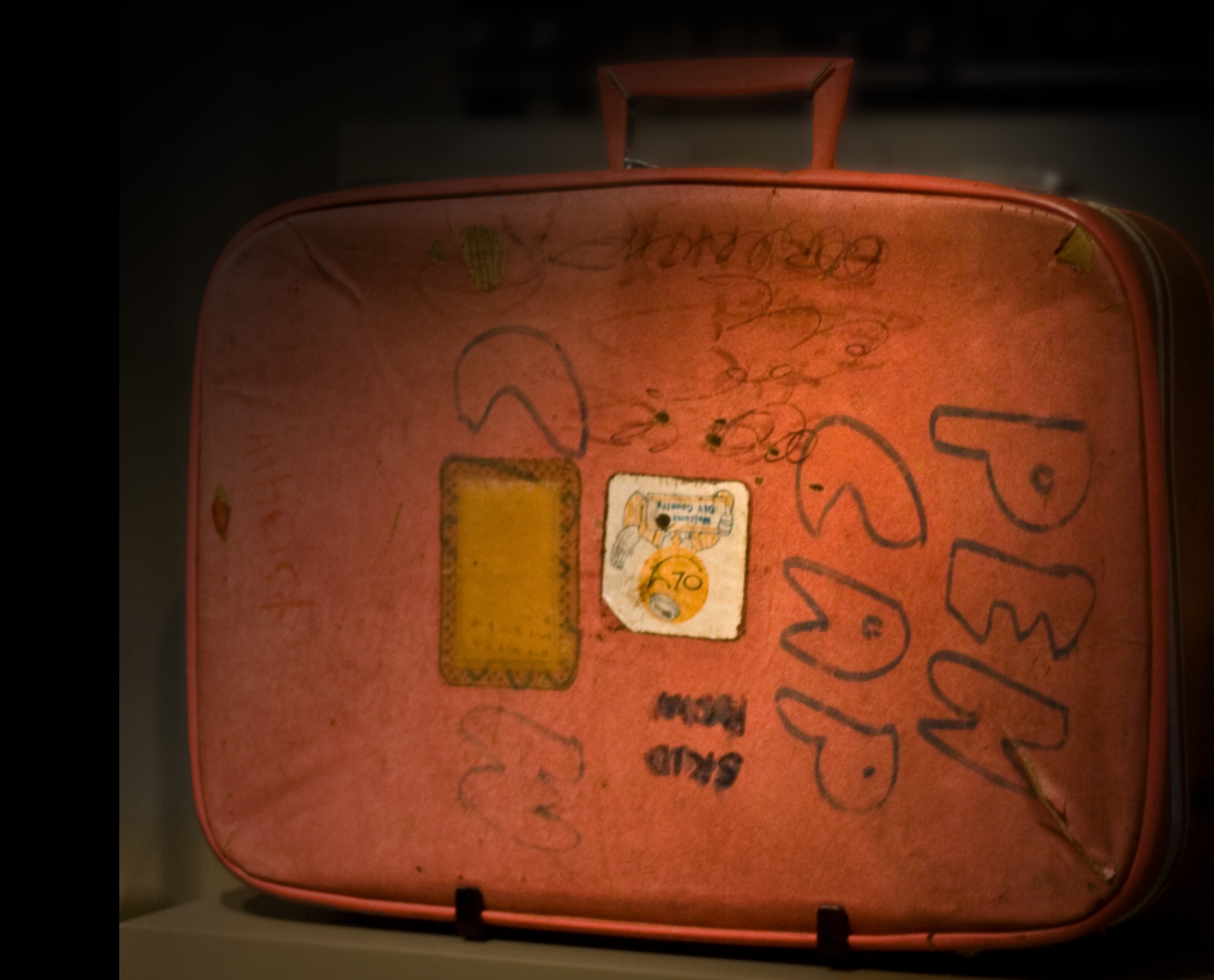
While it is easy to foster sympathy for his daily battle with stomach illness, it is more difficult to understand the twisted logic behind his seemingly conscious decision to abuse opiates. However, habitual orientation by introverted feeling would place the extraverted thinking function (Te) in the inferior position, subjugating it to the whims of the anima. To better understand how Cobain’s thinking turned self-destructive under the anima’s spell, it is first important to note that the internal belief system constituted by the Fi function is not derived from experience or interaction with the environment. Rather, the belief system is innate, arising within the subject from the unconscious. Consequently, according to Haas and Hunziker (2006), Fi types are often only dimly aware of their core principles until there transpires an environmental situation which transgresses them. When such a situation occurs, an individual relying solely on Fi (that is to say, without a well-developed extraverted auxiliary function) would then stop adapting, as Fi—by utilizing such defenses as denial or repression—attempts to subordinate the external situation in adherence to internal values (Myers & Myers, 1980, p. 79).
There appeared to be two key situations in Cobain’s life that created just such a gridlock in adaptation—difficulties surely exacerbated by the more general challenge of developing a preferred introverted feeling function within the context of a culture primarily valuing extraverted thinking (Shaw, 2017). The first was the divorce of his parents, which offended what seemed for Cobain the innate preeminence of the traditional nuclear family. The second was his unsolicited elevation to figurehead of the grunge movement. In punk rock, Cobain found an apposite mirror for his internal moral compass, and he used it to gauge his own artistic integrity. But his newfound celebrity status was antithetical to punk rock values, resulting in a tension that undermined the very foundations of his ego orientation.
“Tender Age in Bloom”
Divorce is surely a difficult process for many children, but according to Cross (2014), the experience was profoundly psychologically disturbing for Cobain, completely morphing his character from a well-adjusted, sweet, and compassionate young boy into a morose, reclusive, capricious, and uncontrollable family menace. In his inconsolability, he was displaced from one family member to the next. After exhausting the list of relatives capable of managing his behaviors, he was then placed with friends and their families, and before the end of adolescence he was essentially transient and homeless. According to Sandner and Beebe (1995), such chronic pressure leveraged against the ego’s development can incite autonomous defenses from the unconscious, especially from the “attitudinal shadow,” or the opposing personality—that function which is opposite in attitude to the ego’s typical mode of orientation (p. 324). In more or less normal developmental circumstances, the superior function is relied upon to bring one into relationship with others, while the opposing personality, serving within a self-regulating system of checks and balances, upholds the boundaries of the ego by adopting an oppositional stance and defending one against others.
With extraverted feeling in this oppositional position, one could expect a normally thoughtful and compassionate INFP to lash out and become uncharacteristically depreciating of others when facing stressful conditions. However, when stress becomes chronic and the natural mode of adaptation via the superior function is continually thwarted by unrelenting pressure from the environment, defensive measures from the opposing personality can run amok, eventually causing one to “so identify with this opposing personality that it replaces the natural personality attitude” (Sandner & Beebe, 1995, p. 327). This dynamic might account for the remarkable shift in Cobain’s personality following the divorce. As a child powerless in his ability to affect the environmental affronts to his innate Fi ideals, Cobain’s opposing Fe defended him against the transgressive milieu by means of isolation and the denigration of others.
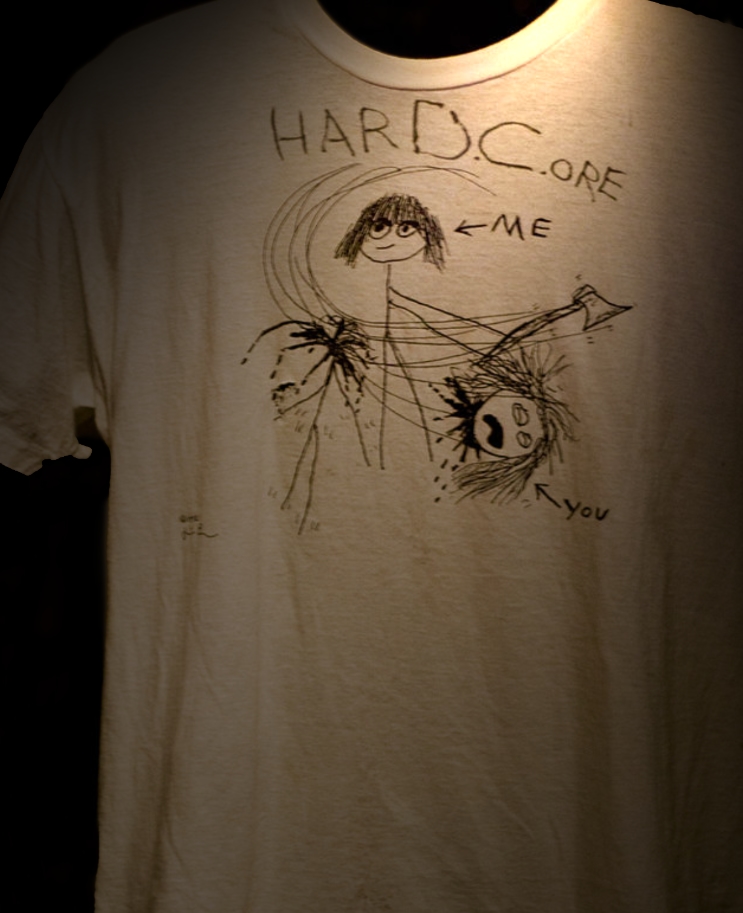
“As a Friend, as a Known Enemy”
According to Sandner and Beebe (1995), it is common for individuals who, like Cobain, identify with their opposing personality function to be found within subcultural groups. Because subgroups bond together in their opposition to the mainstream, the defensive and oppositional traits of the attitudinal shadow can be channeled into positive relations within the in-group. It is, therefore, less likely for ego functioning to be as profoundly disturbed as with instances when the personality is hijacked by the anima-structured inferior function.

But in a twist of fate, Cobain’s very success with Nirvana elevated him out of the antiestablishment subculture with which he so strongly related and into the mainstream he defined himself against. As his popularity exploded and his commercial success grew, he felt increasingly disingenuous with his identity as a punk rocker, putting him again at an impasse—without the sense of belonging to punk subculture, his oppositional Fe no longer had an adequate outlet to defend him against the pressures of an overwhelming environment. Further, it was as though the time spent living out of the opposing personality in adolescence left his natural Fi ego functioning impoverished and unequipped to manage the idiosyncratic demands of life in the limelight, triggering “a disastrous compensatory attempt by the unconscious to replace a failing ego with archetypal modes of adaptation” (Sandner & Beebe, 1995, p. 328). The inferior function, according to von Franz (1971/2013), serves as a gateway to the unconscious and is thus the most viable access point through which these archetypal contents can emerge. Disaster appeared imminent for Cobain when he lost his Fe connection with punk culture and his anima structured Te desperately filled the void.
“Never Met a Wise Man / If so It’s a Woman”
A developed and consciously accessible extraverted thinking function concerns itself chiefly with hard facts and objective standards of the external world. But in the inferior position, the facts are spun into a web of anima fantasies, distorted to confirm preexisting biases of nonnegotiable introverted feeling ideals and thus prone to becoming cloudy, reductionist, self-deprecating, paranoid. Even in Cobain’s better moments, Cross (2014) insisted that he “was never one to let the truth get in the way of a good story” (p. 53); he would consistently spin the facts to “tell an emotional truth rather than an actual one” (p. 38). In his darker moments, when he was prone to anima outbursts, everyone around him “felt impelled to walk on eggshells around his emotions” (Goldberg, 2019, p. 21). Jung (1921/2014a) attributed this form of hypersensitivity to the projection of inferior thinking, so that one “begins consciously to feel ‘what other people think’” (¶ 643). Relegated to the unconscious, thinking takes on the qualities of the unconscious, becoming infantile, archaic, magical. One naturally assumes the thoughts of others to be malicious and persecutory, responding with preemptive attacks and unscrupulous efforts to undermine the uncanny archetypal power of the projection carried by the other. This archaic form of Te was evident in Cobain’s feud with Pearl Jam and his frequent defamation of vocalist Eddie Vedder (Barnes, 2015). And perhaps it was most especially evident in his tumultuous marriage with Courtney Love; he often assumed her infidelity, indicting Billy Corgan in his paranoid fantasies of adulterous trysts (Cross, 2014).
According to Jung (1921/2014a), the neurotic symptoms of introverted feeling types entrenched in inferior thinking often manifest as psychosomatic illness. Cobain’s desperate attempts to navigate the complexities of the music industry and his newly appointed celebrity status through his inferior Te appear to have worsened (if not caused) his stomach issues. Consequently, abrupt cancellations of Nirvana shows, and even entire tours, occurred with such regularity as to nearly become routine. He fell deeper into his dependence on heroin as his twisted Te logic continually rationalized self-medication. The reductionist tendencies of inferior Te can also manifest as dichotomous or black-and-white thinking, which Shneidman (1993) correlated with increased suicidality. Correspondingly, as Cobain continued to decompensate, his suicidal gestures became more frequent and dangerous, on several occasions requiring resuscitation by his wife (Cross, 2014).
The anima’s proclivity to overwhelm the conscious mind with dark moods and impulses might, according to Jung (1931/2014b), account for the fact that men commit suicide at a higher rate than women. This is because, in classical Jungian thought, the anima is conceived as contrasexual, as an inner compensatory femininity for masculine consciousness, and thus unique to male psychology. While many post-Jungians contend this game of gender opposites to be antiquated and obsolete, Cobain’s story does fit the classical Jungian image of an anima-possessed man, especially when considering he bitterly referred to himself as an “emasculated, infantile complain-ee,” and an “erratic, moody baby” in his own suicide note (as cited in Cross, 2014, pp. 351-352).

It is conceivable that the mystical quality exuded by those in possessed states might account, at least in part, for the captivating effect of the 27 Club on the public, as each member was arguably seized by both daemonic genius and demonic madness. In Cobain’s case, he indeed admitted to channeling his intense emotionality, especially his anger and frustration, into Nirvana. The strident discontent so tangible in the music, the indignation so resonant as to define and shape an entire generation, owed its existence in large part to the castigation inflicted on Cobain’s ego from the anima. To his own trepidation, Cobain confessed that without the mysterious stomach ailment, he feared he would lose all creative impetus and artistic productivity (Morgen & Renfrew, 2015).
“Amazes Me, the Will of Instinct”
With the association of ailment and artistry, we arrive again at the beginning—the viral narrative, instantiated in the 27 Club fascination, that self-destructive suffering is inseparable from artistic greatness. The difficulties that eventually drove Cobain into suicide were the very same that inspired his genius and forever transformed the landscape of popular music. The environmental wounds to Cobain’s natural INFP disposition left his ego vulnerable to an anima invasion. It was she who allowed the instinctual power of the unconscious, in both its creative and destructive properties, to flow through the inferior function and overrun his personality, attempting to restore order by instigating archetypal modes of adaptation.
The self-destructive patterns of behavior weaving Cobain together with other members of the 27 Club cluster around central themes, insinuating a particular archetypal culprit—Dionysus. The frequency with which Dionysus is referenced in the 27 Club literature is not insignificant. Though the biographers and journalists evoking the riotous god are presumably unfamiliar with an explicitly archetypal perspective, their intuitions are psychologically appropriate. The way 27 Club members saturated themselves into oblivion with rampant use of opiates, alcohol, and other depressants reflects the downward archetypal movements of Dionysus—his moistness, drunkenness, his retreat to oceanic depths. Dionysus, depicted as a child, is an image for both the 27 Club’s capacity for imagination and abundant creativity and its untempered acting out, impulsivity, and undisciplined foolishness. It seems enchantment with the 27 Club cannot be separated from the allure of the Dionysian urge itself.

Perhaps the enthrallment with the 27 Club and its tragedy, like the fascination with hysteria at the turn of the 19th century, represents the same attempt by Dionysian consciousness to enter our collective awareness. If so, the inferior function, in its ever ineradicable undermining of the ego’s agenda, presents each of us with a lifetime of opportunities for Dionysian initiation. As von Franz (1971/2013) asserted, the inferior function can never be tamed, never fully brought into consciousness or submitted to the will of the ego. Like the paranoid, twisted, and anima-infused extraverted thinking of Cobain, the inferior function’s proclivity to wreak havoc on the ego’s intentions erodes the fantasy of linear development by insisting on Dionysian circularity—birth, death, rebirth, repeat. It invites one to passively accept that the comings and goings of libidinal energy and creative output are the will of an archetypal dominant deeper and more powerful than the ego. It generates interiority and reflection as the ego learns to contend with other centers of consciousness, other motivations in the psyche. And for better or worse, it leverages the vulnerabilities and incompleteness of the ego orientation in order to release the instinctual and archetypal energy needed in a crisis in adaptation. To accept the Dionysian initiation is to appreciate the imperfections of the inferior function, its sufferings, its genius. We cannot hope to overcome the inferior function, only to surrender, remembering the words of Joseph Campbell: “The goal is to live with godlike composure on the full rush of energy, like Dionysus riding the leopard, without being torn to pieces” (as cited in Osbon, 1991, p. 24).
References
Barnes, T. (2015, April 14). How Nirvana unintentionally ruined rock and roll. Mic. Retrieved from https://www.mic.com/articles/115390/how-nirvana-unintentionally-ruined-rock-and-roll
Beebe, J. (2006). Evolving the eight-function model: 8 archetypes guide how the function-attitudes are expressed in an individual psyche. Australian Psychological Type Review, 8(1), 39-43.
Cobain, K. (2002). Kurt Cobain: Journals. New York, NY: Berkley Publishing Group.
Cottingham, C. (2007, November 14). Nirvana unplugged: Suicide note or just a good gig? The Guardian. Retrieved from https://www.theguardian.com/music/musicblog/2007/nov/14/nirvanaunplugged
Cross, C. R. (2014). Heavier than heaven: A biography of Kurt Cobain. New York, NY: Hachette Books.
Eccleston, D. (2013, August 15). Kurt Cobain: Quotes from moving in utero interview. Mojo. Retrieved from https://www.mojo4music.com/articles/5248/kurt-cobain-quotes-from-moving-in-utero-interview
Goldberg, D. (2019). Serving the servants: Remembering Kurt Cobain. New York, NY: HarperCollins Publishers.
Haas, L., & Hunziker, M. (2006). Building blocks of personality type: A guide to discovering hidden secrets of the personality type code. San Bernardino, CA: Eltanin Publishing.
Hann, M. (2015, April 2). Do musicians die young? The truth about the 27 Club. The Guardian. Retrieved from https://www.theguardian.com/music/musicblog/2015/apr/02/do-musicians-die-young-truth-27-club
Hillman, J. (1999). The myth of analysis: Three essays in archetypal psychology. Evanston, IL: Northwestern University Press. (Original work published in 1960)
Jung, C. G. (2014a). Psychological types (R.F.C. Hull, Trans.) (H. Read et al., Eds.), The collected works of C. G. Jung: Complete digital edition (Vol. 6). Retrieved from http://www.ebscohost.com (Original work published in 1921)
Jung, C. G. (2014b). Mind and earth (R.F.C Hull, Trans.). In H. Read et al. (Series Eds.), The collected works of C. G. Jung: Complete digital edition (Vol. 10, pp. 29-49). Retrieved from http://www.ebscohost.com (Original work published in 1931)
Jung, C. G. (2014c). Concerning rebirth (R.F.C Hull, Trans.). In H. Read et al. (Series Eds.), The collected works of C. G. Jung: Complete digital edition (Vol. 9i, pp. 113-147). Retrieved from http://www.ebscohost.com (Original work published in 1950)
Kenny, D. T. (2015, April 2). Why the 27 Club is a myth: Jimi Hendrix and Amy Winehouse may be members but that doesn’t make it real. The Independent. Retrieved from http://www.independent.co.uk/arts-entertainment/music/features/why-the-27-club-is-a-myth-jimi-hendrix-and-amy-winehouse-may-be-members-but-that-doesnt-make-it-real-10152675.html
Morgen, B., & Renfrew, D. (Producers), & Morgen, B. (Director). (2015). Kurt Cobain: Montage of heck [Motion picture]. Germany: Universal Pictures, HBO Films.
Myers, I. B., & Myers, P. B. (1980). Gifts differing: Understanding personality type. Mountain View, CA: CPP, Inc.
Osbon, D. K. (Ed.). (1991). Reflections on the art of living: A Joseph Campbell companion. New York, NY: Harper Collins.
Sandner, D. F., & Beebe, J. (1995). Psychopathology and analysis. In M. Stein (Ed.), Jungian analysis, (2nd ed., pp. 322-330). Chicago, IL: Open Court.
Shaw, J. (2017, January 4). Resurrecting the feeling function. Personality Type in Depth. Retrieved from https://typeindepth.org/2017/01/resurrecting-the-feeling-function/
Shneidman, E. S. (1993). Suicide as psychache. Journal of Nervous and Mental Disease, 181, 147-149.
Simmons, G. (2018). 27: The legend and mythology of the 27 Club. Brooklyn, NY: powerHouse Books.
Stein, J. (2011, December 20). Musicians may not be at higher risk for dying at 27, study says. Los Angeles Times. Retrieved from http://articles.latimes.com/2011/dec/20/news/la-heb-27-club-musician-deaths-20111220
von Franz, M-L. (2013). The inferior function. In M-L. von Franz & J. Hillman, Lectures on Jung’s typology. Putnam, CT: Spring Publications. (Original work published in 1971)
watchmojo. (2017, February 20). One of Kurt Cobain’s final interviews—incl. extremely rare footage [Video file]. Retrieved from https://www.youtube.com/watch?v=3CTsGievjMU
Wolkewitz, M., Allignol, A., Graves, N., & Barnett, A. G. (2011). Is 27 really a dangerous age for famous musicians? Retrospective cohort study. BMJ, 343, d7799. https://doi.org/10.1136/bmj.d7799
Lyrics, in order of appearance
Cobain, K. (1993). All apologies [Recorded by Nirvana]. On In utero [MP3 file]. Cannon Falls, MN: DGC Records.
Cobain, K. (1991). In bloom [Recorded by Nirvana]. On Nevermind. [MP3 file]. Van Nuys, CA: DGC Records.
Cobain, K. (1991). Come as you are [Recorded by Nirvana]. On Nevermind. [MP3 file]. Van Nuys, CA: DGC Records.
Cobain, K. (1991). Territorial pissings [Recorded by Nirvana]. On Nevermind. [MP3 file]. Van Nuys, CA: DGC Records.
Cobain, K. (1991). Polly [Recorded by Nirvana]. On Nevermind. [MP3 file]. Van Nuys, CA: DGC Records.
Images
Bailey, B. (1993). Kurt Cobain MTV live and loud [Online image]. Retrieved June 30, 2019 from https://www.commons.wikimedia.org
Cobain, K. (1994). Kurt Cobain’s suicide note [Online image]. Retrieved June 30, 2019 from https://www.commons.wikimedia.org
Costanzo, D. (2013). EMP, Seattle–Kurt Cobain’s guitar. Retrieved from https://www.commons.wikimedia.org
Kelly (2012). Kurt Cobain’s hard core t-shirt, EMP museum (detail) [Online image]. Retrieved June 30, 2019 from https://www.commons.wikimedia.org
Kelly (2012). Kurt Cobain’s suitcase, EMP museum (detail) [Online image]. Retrieved June 30, 2019 from https://www.commons.wikimedia.org
Konczos, K. (2011). In memoriam (detail). Retrieved from https://www.commons.wikimedia.org
Robin, R. (c. 2013). Kurt Cobain. Retrieved from www.commons.wikimedia.org





